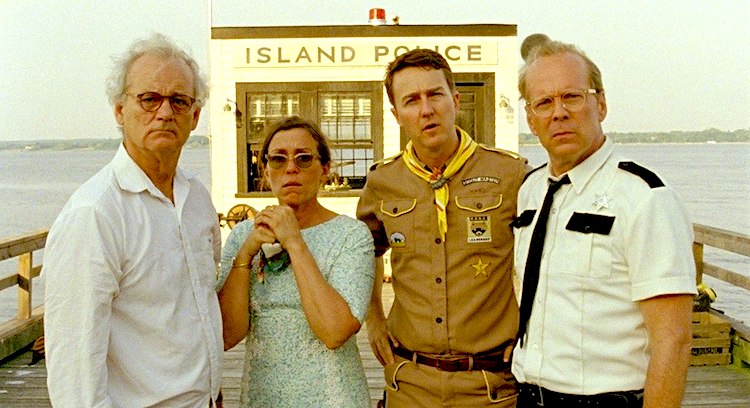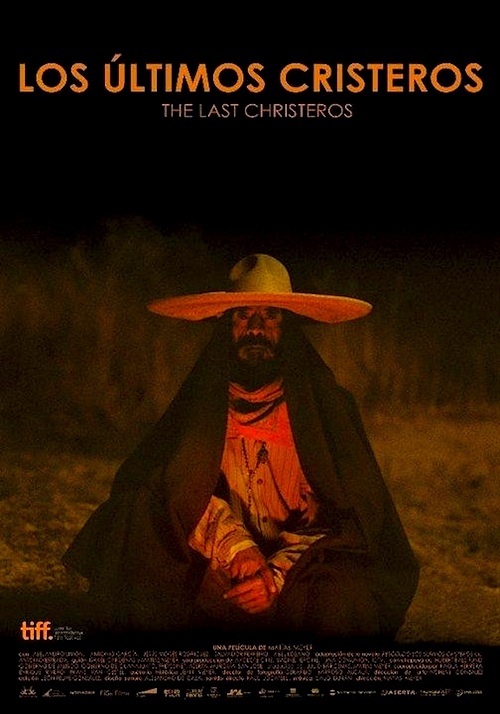By Joe Bendel. Two twelve year-old runaways would like to remake the generic sounding Mile 3.25 Tidal Inlet into a New England version of the Blue Lagoon, but they aim to maintain the cultural trappings of 1965 middle class America, as they relate to it, in the process. Unfortunately, the adult world keeps intruding on their private moments in Wes Anderson’s Moonrise Kingdom, the opening night film of this year’s Cannes Film Festival, which bows theatrically in New York tomorrow (Friday, 5/25).
Sam Shakusky is a terrible Khaki Scout. Actually, his skills are not that bad, but he does not fit in socially with Scout Master Ward’s troupe. Unbeknownst to Ward, Shakusky is an orphan, about to get the heave-ho from his foster family. However, the sensitive scout has successfully wooed Suzy Bishop, the eldest child of two self-absorbed yet profoundly unhappy attorneys.
When Shakusky fails to appear at revile one fateful morning, it sets off a manhunt throughout New Penzance Island, taxing the meager resources of Captain Sharp, Mrs. Bishop’s recently dumped lover. Chastely dedicated to each other, the two fugitives would like to permanently retreat from reality at the prosaically named inlet they duly redub “Moonrise Kingdom.” Instead, they will repeat a cycle of chase, apprehension, and escape, as a historic storm approaches New Penzance, as it always happens in an island-bound story.

It takes about ten seconds for Moonrise Kingdom to announce itself as a Wes Anderson film, through his constantly panning camera and the richly detailed vintage sets. Indeed, the attention to detail extends down to the covers of the chapter-books Bishop reads aloud to Shakusky. Yet, rather than detracting from his fable-like story, Anderson’s signature style is perfectly suited to the innocence of young love. Focusing on young POV characters is actually quite a shrewd strategy on his part, giving him the license to incorporate all kinds of nostalgic eccentricity (nod to Norman Rockwell? Check.) while staying faithful to their precocious worldview. Frankly, this is the sort of film a visual stylist like Tim Burton ought to be making, instead of aimless tent-poles like Dark Shadows.
As Mr. Bishop, Anderson mainstay Bill Murray once again plays a middle-aged depressive with deep-seated relationship woes. Fellow alumnus Jason Schwartzman is also back for more, getting some of Moonrise’s best comedy scenes as Cousin Ben, a slick operating senior Khaki Scout. Indeed, the film boasts several notably colorful supporting turns, including by Bruce Willis, acting his age and playing against his action hero persona as the put-upon Captain Sharp. Tilda Swinton also absolutely plays to the hilt the personification of bureaucracy known simply as “Social Services,” while the mere sight of Bob Balban’s “Narrator” in his bright crimson wardrobe generates laughter. Still, the dramatic load largely falls on the young newcomers, Jared Gilman and Kara Hayward, who are quite emotionally engaging leads, playing their scenes together scrupulously straight.
Essentially, Moonrise is a children’s movie for adults. Robert Yeoman’s cinematography gives it all a sensitive period sheen, while the soundtrack (dominated by the unlikely combination of Benjamin Britten and Hank Williams recordings, more than Alexandre Desplat’s original themes) effectively underscores the wistful vibe. Altogether, it is very Wes Anderson – but its gentle, humane spirit is quite winning. Recommended surprisingly highly (well beyond Anderson’s established circle of admirers), Moonrise opens tomorrow (5/25) in New York at the AMC Lincoln Square and Regal Union Square.
LFM GRADE: B+
Posted on May 24th, 2012 at 1:08pm.
